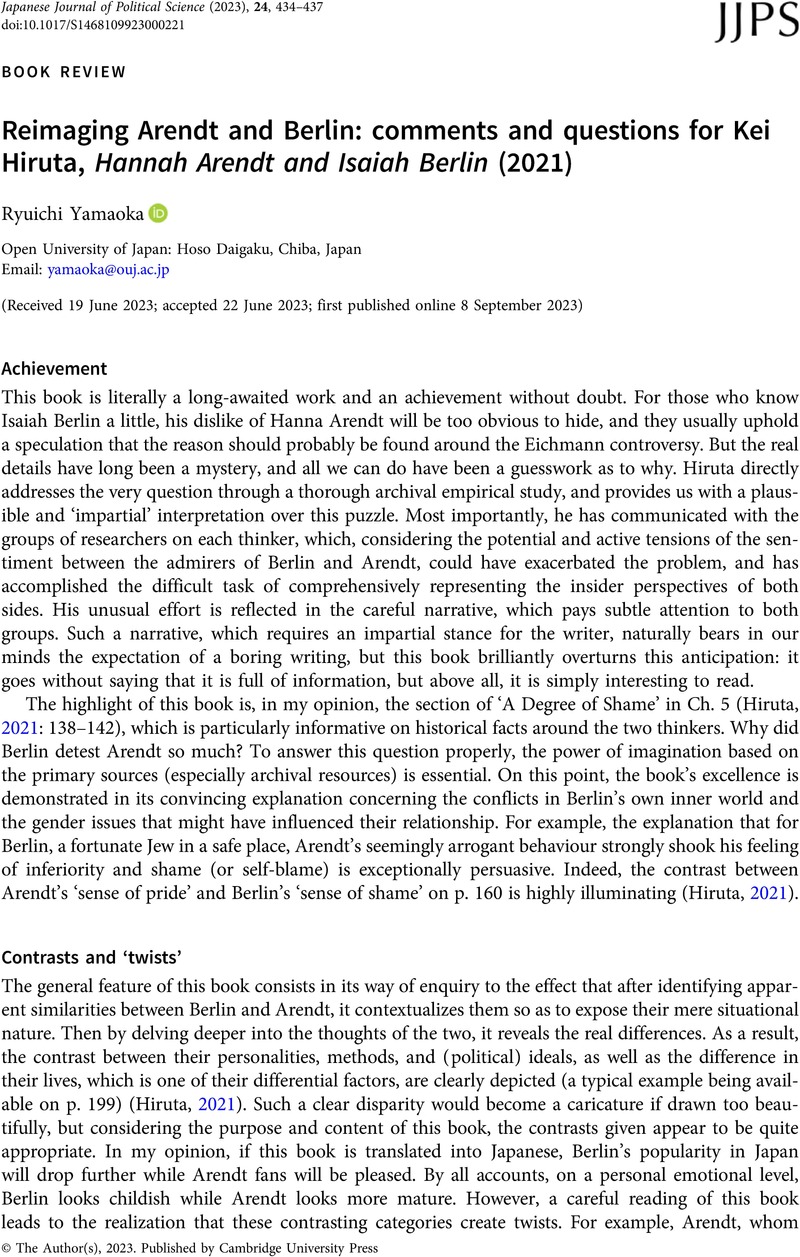No CrossRef data available.
Article contents
Reimaging Arendt and Berlin: comments and questions for Kei Hiruta, Hannah Arendt and Isaiah Berlin (2021)
Published online by Cambridge University Press: 08 September 2023
Abstract
An abstract is not available for this content so a preview has been provided. Please use the Get access link above for information on how to access this content.

- Type
- Review
- Information
- Copyright
- Copyright © The Author(s), 2023. Published by Cambridge University Press
References
Berlin, I (1958) Two concepts of liberty. In idem, (1969), Four Essays on Liberty. Oxford: Oxford University Press, pp. 118–172.Google Scholar
Berlin, I (1964) From hope and fear set free. Proceedings of the Aristotelian Society 64, 1–30.Google Scholar
Hiruta, K (2021) Hannah Arendt and Isaiah Berlin: Freedom, Politics and Humanity. Princeton: Princeton University Press.Google Scholar


